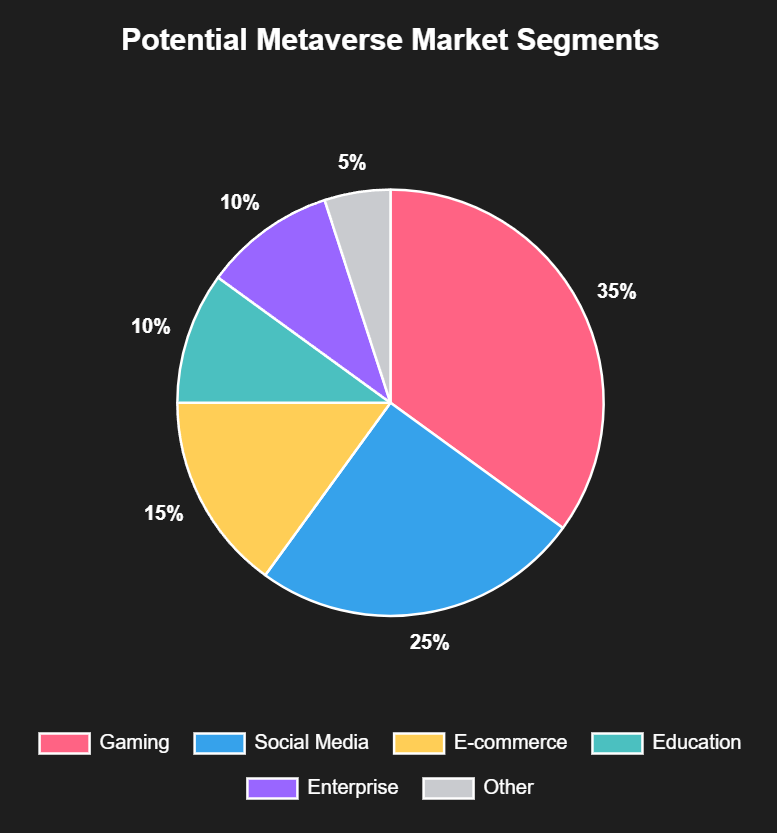Imagine slipping on a sleek headset and instantly transporting to a vibrant digital world where you can work, play, and socialize with people from across the globe. This tantalizing vision of the metaverse captured our collective imagination just a few years ago. Tech giants poured billions into developing virtual realms, and futurists proclaimed the dawn of a new digital age. But as we approach 2024, that initial spark seems to have dimmed. Has the metaverse dream already faded into obsolescence, or is it simply evolving?
The Rise of the Metaverse Concept
The idea of a fully immersive digital universe isn’t new. Science fiction has long explored the concept, from Neal Stephenson’s 1992 novel “Snow Crash” to the 2011 bestseller “Ready Player One.” But it wasn’t until October 2021, when Facebook rebranded as Meta, that the metaverse entered mainstream consciousness.
Suddenly, everyone was talking about this bold new frontier. Tech companies scrambled to stake their claim in the virtual gold rush. Microsoft acquired gaming giant Activision Blizzard for a staggering $68.7 billion, citing metaverse ambitions. Investors poured money into virtual real estate and digital assets.
Initial Expectations vs. Current Reality
The metaverse was hyped as a revolutionary shift in how we interact with technology and each other. Proponents painted a picture of seamless virtual experiences that would transform work, education, entertainment, and social connections.
But the current reality falls short of those lofty expectations. Let’s compare the dreams with today’s landscape:
If you were trying to dive into Meta’s Horizon Worlds, eager for a cutting-edge experience, you might find yourself wandering empty virtual plazas instead. Struggling with clunky controls, you’d likely feel more isolated than connected, a far cry from the bustling digital utopia promised in sleek promotional videos.
Challenges Facing the Metaverse
Several significant hurdles stand in the way of widespread metaverse adoption:
Technical Limitations: Current VR hardware is bulky, expensive, and often causes motion sickness with extended use. Internet infrastructure struggles to provide the low latency and high bandwidth required for seamless experiences.
User Adoption Barriers: Many people find VR isolating or simply prefer real-world interactions. The learning curve for navigating virtual spaces can be steep, especially for non-gamers.
Privacy and Security Concerns: The amount of data collected in immersive environments raises serious privacy issues. Virtual worlds also present new avenues for harassment, scams, and other malicious activities.
As Vitalik Buterin, co-founder of Ethereum, noted:
“The ‘metaverse’ is going to happen, but I don’t think any of the existing corporate attempts to intentionally create the metaverse are going anywhere.”
Success Stories and Potential Applications
Despite the challenges, some areas show promise for metaverse-like technologies:
Gaming: Platforms like Roblox and Fortnite already host millions of users in shared virtual spaces.
Virtual Events: The pandemic accelerated adoption of virtual conferences, concerts, and art exhibitions.
Training and Simulation: Industries like healthcare and aerospace use VR for immersive training scenarios.
The Slowdown
The initial metaverse hype has undoubtedly cooled. Several factors contribute to this slowdown:
Reality Check: As the novelty wore off, many realized current technology couldn’t deliver on grandiose promises.
Economic Headwinds: Tech companies faced layoffs and budget cuts, forcing a reevaluation of moonshot projects.
Shifting Priorities: AI advancements like ChatGPT captured public attention, diverting focus from VR and AR.
User Fatigue: After years of increased screen time during the pandemic, many crave real-world connections over virtual ones.
The Future of the Metaverse
While the metaverse may not arrive as quickly or dramatically as once predicted, it’s premature to declare it dead. Instead, we’re likely seeing an evolution of the concept:
Augmented Reality (AR) Integration: Rather than fully immersive VR worlds, AR overlays that enhance our physical environment may gain more traction.
Focused Applications: Instead of a single, all-encompassing metaverse, we’ll likely see specialized virtual spaces for specific purposes (e.g., virtual classrooms, design collaboration tools).
Improved Hardware: Lighter, more comfortable VR/AR devices could drive wider adoption.
AI-Powered Interactions: Advancements in natural language processing and computer vision could make virtual interactions feel more natural and engaging.
Cathy Hackl, a prominent metaverse strategist, predicts:
“The metaverse won’t be one single place, but a network of 3D virtual worlds. It’s not about escaping reality, but enhancing it.”
Conclusion
The metaverse hasn’t arrived with the bang many expected, but it hasn’t disappeared either. We’re in a period of recalibration, where inflated expectations meet technological and social realities. The concept of shared virtual spaces continues to evolve, shaped by advances in AR, AI, and changing user preferences.
While the all-encompassing digital universe remains elusive, elements of the metaverse are gradually weaving into our daily lives. From AR navigation apps to virtual team-building exercises, the line between physical and digital continues to blur.
The metaverse dream isn’t dead — it’s transforming. As we navigate this shifting landscape, one question remains: How will we shape these new digital realms to truly enhance human connection and creativity, rather than replace them?
References:
https://www.techtarget.com/searchcio/tip/History-of-the-metaverse-explained
https://www.forbes.com/sites/bernardmarr/2022/03/21/a-short-history-of-the-metaverse/
https://mazerspace.com/top-brands-in-the-metaverse-business/
https://www.nytimes.com/2021/11/11/opinion/sway-kara-swisher-jaron-lanier.html
https://xpertvr.ca/the-amazing-origin-story-of-the-metaverse/
https://morethandigital.info/en/history-evolution-of-metaverse-concept/








We are already in the metaverse. Every day we use technology to interact. VR, AR are just evolution. Internet triggered it